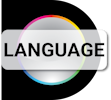 Please note: QuickClipXO has been deprecated, and is no longer available. To use our current products in an alternate language, please see: https://www.drastic.tv/support-59/supporttipstechnical/212-alternate-language-interface
Please note: QuickClipXO has been deprecated, and is no longer available. To use our current products in an alternate language, please see: https://www.drastic.tv/support-59/supporttipstechnical/212-alternate-language-interface
The QuickClipXO interface was written in the Java programming language. It supported custom message strings which can be used to display alternate text for most of its controls and displays.
Getting Started
The displayed text is chosen based on the language and country code to which your operating system is set and the inclusion of a corresponding properties file. Once the appropriate properties file has been translated, send the file to Drastic for inclusion in the standard exe compile. QuickClip must be installed on your machine in order to test your new language. The properties file may be edited in any text editor, but it is recommended that you test the translated strings in XO to ensure they are not too long and that they are appropriate for the specific context.
Install and license QuickClip. If version 3, make sure the QuickClip Network Control Option has been installed and licensed
Install Java from www.java.com
Install WinZip from www.winzip.com (to pack the .jar file, trial version is sufficient)
Contact Drastic to download the base message bundle file.
Make sure you have a text editor (notepad will do)
Verify the language and country to which your operating system is set
Using the MessagesBundle File
First, ensure the new properties file can be tested by verifying the language and country code your operating system is using. Please note, these may be different than the country you are currently in and the language you speak. Rename the MessagesBundle file based on the chart at the end of this page. Here are some common examples:
MessagesBundle_en_US.properties English – US
MessagesBundle_DE_DE.properties German – Germany
MessagesBundle_fr_FR.properties French – France
MessagesBundle_fr_CA.properties French – Canadian
MessagesBundle_es_ES.properties Spanish – Spain
MessagesBundle_ko_KR.properties Korean – Korea
Please note that many systems are actually installed with US english operating systems and will respond with that country and language code. If your MessagesBundle file is not recognized, try renaming it MessagesBundle_en_US.properties.
Editing the MessagesBundle File
Start by renaming the MessagesBundle_en_US.properties to match you country and language. Open the renamed file in your text editor. Near the top you will see:
Connect = Connect
Disconnect = Disconnect
The left side of the equation is our internal name. The right side is the corresponding string that will be displayed. Translate the 'Connect' and 'Disconnect' property strings to your language as in the following examples:
// for Spanish
Connect = Conecte
Disconnect = Desconexión
// for French
Connect = Reliez
Disconnect = Débranchement
// for German
Connect = Schließen Sie an
Disconnect = Trennung
Save your MessagesBundle file. Translating the right side of all the equations will translate the text displayed in the interface. Now the translation needs to be tested.
Testing the MessagesBundle File
Normally, when running QuickClipXO, we use QuickClipXO.exe (or QuickClip under Linux). However, to test the translation we need to be able to add it to the application. For testing purposes we will use QuickClipXO.jar. QuickClipXO.jar is available as part of the Network Add On. You can find it here:
C:\Share\Inetpub\Apps
Copy QuickClipXO.jar to the QuickClip installation directory (normally: C:\Program Files\Drastic\QuickClip\). The jar (Java archive) file is simply a zipped archive file of all the elements needed to run QuickClipXO. Run WinZip and open the QuickClipXO.jar file. There are a number of files in the archive. To add your translated MessagesBundle file, simply add it to the root directory of the archive. If further changes are made to the translated MessagesBundle file it will need to be re-added to the archive using WinZip.
To run the jar file under Windows, open a command prompt, go to the directory to which you copied QuickClipXO.jar and type
java -jar QuickClipXO.jar
(if you wish, you can also associate .jar files with java.exe using the method at the bottom of this page).
This should bring up the QuickClipXO interface. Click around and make sure all the strings fit and make sense. Once you are happy with your language file, return it to Drastic (send it to
Local Country and Language Codes
Locale Language Country
da_DK Danish Denmark
DE_AT German Austria
DE_CH German Switzerland
DE_DE German Germany
el_GR Greek Greece
en_CA English Canada
en_GB English United Kingdom
en_IE English Ireland
en_US English United States
es_ES Spanish Spain
fi_FI Finnish Finland
fr_BE French Belgium
fr_CA French Canada
fr_CH French Switzerland
fr_FR French France
it_CH Italian Switzerland
it_IT Italian Italy
ja_JP Japanese Japan
ko_KR Korean Korea
nl_BE Dutch Belgium
nl_NL Dutch Netherlands
no_NO Norwegian (Nynorsk) Norway
no_NO_B Norwegian (Bokmål) Norway
pt_PT Portuguese Portugal
sv_SE Swedish Sweden
tr_TR Turkish Turkey
zh_CN Chinese (Simplified) China
zh_TW Chinese (Traditional) Taiwan
Trademarks, Registered Trademarks, and CopyrightsTrademarks, Registered Trademarks, and Copyrights
Drastic Technologies, Ltd. – trademarks specified here.
Linus Torvalds - Linux® is the registered trademark of Linus Torvalds in the U.S. and other countries.
Microsoft Corporation – Microsoft: Windows®, Video For Windows (VFW), DirectShow, Microsoft, Skype, Microsoft Azure, Microsoft Teams, Wave Mapper, Microsoft, Windows NT|2000|XP|XP Professional|Server 2003|Server 2008 |Server 2012, Windows 7, Windows 8, Media Player, Media Encoder, .Net, Internet Explorer, SQL Server 2005|2008|2012|2014, Windows Media Technologies and Internet Explorer are trademarks of Microsoft Corporation.
Oracle Corporation - Oracle®, Java, Front Porch Digital, and MySQL are registered trademarks of Oracle Corporation and/or its affiliates.
All other trademarks are the property of their respective owners.

